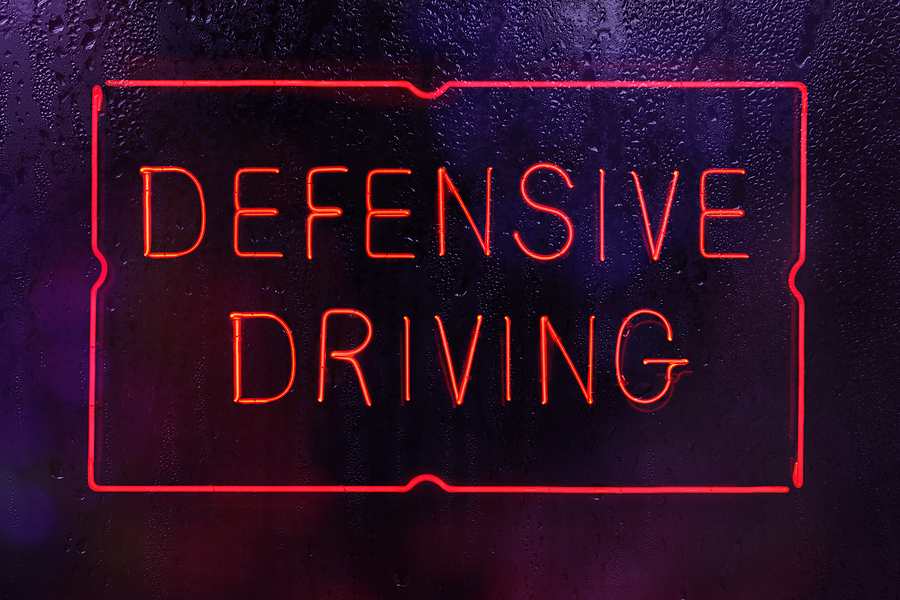Defensive Driving Explained and How it Assists Fleet Managers to Maintain Fleet and Driver Safety

Defensive driving is the most crucial mentality to adopt if you want to keep your Fleet safe, your cars in working shape, and your drivers under control. You and every other driver in your Fleet will be spared the humiliation of a usual reprimand from the highway and interstate police if you do this as well.
Defensive driving is a mentality that encompasses a set of driving behaviors. These driving habits help drivers establish a daily routine that is as uneventful as possible, which is the goal of defensive driving. And this is something that is of utmost significance in the working life of a fleet manager.
What exactly does “defensive driving” entail?
An attitude that enables a driver to recognize and prepare for potential driving dangers is referred to as defensive driving. It does involve a specific set of driving abilities that will allow the driver to always maintain complete awareness, regulate their pace, and prepare for the unexpected. Respecting the other drivers on the road, as well as the climate and the circumstances of the road, and adjusting as necessary are also required.
There is, following Wikipedia, a systematic approach to looking at it. As the driver, you aim to “save lives, time, and money, despite the conditions around you and the actions of others.” To this end, the “Safe Practices for Motor Vehicle Operations” standard defines it as a set of defensive driving skills, the goal of which is to “save lives, time, and money, despite the conditions around you and the actions of others.”
The fundamentals of taking precautions when driving.
Mark Everard Pepys devised the roadcraft method of vehicle or motorcycle management and presented it to the public in 1937. It was interesting to learn that the objective of it was to educate drivers on how to run their automobiles securely. Since this initial attempt at safe driving, a lot has happened, and every one of those changes has been for the better. Especially considering that the number of automobiles went from a few thousand in the early 1900s to around 1.32 billion in 2016 worldwide. In 2020, driver safety will unquestionably take precedence over all other concerns. To achieve this goal, a set of guiding principles that both characterize and support the efforts to cultivate defensive driving were devised.
Always keep the minimum and maximum speed regulations in mind when driving.
Maintaining a state of constant vigilance and freedom from distractions so that one may foresee an unusual dilemma and sidestep the risk when confronted with a challenging circumstance.
- Maintaining courtesy and paying attention to the behavior of other drivers.
- Keeping a safe gap between your car and the one in front of you
- Keep an eye on what’s ahead of you and be ready for the unexpected since there’s a chance that other drivers won’t act the way they usually would. This encompasses pedestrians as well as drivers of motor vehicles.
- Always keep the current weather and road conditions in mind, making any necessary adjustments to your driving style.
- Changing one’s speed just before entering a turn might save the driver from having to apply the brakes during a turn.
- Keeping to all the rules and regulations of the road
Defensive driving: Pros and Cons
Fleets that operate in today’s modern era typically include defensive driving programs as one of the fundamental components of their operations. The most evident benefit of defensive driving is its increase in overall road safety. In addition to its use when traveling, it also has several practical applications in the workplace.
Pros
- It’s simple to understand and put into practice.
- It’s an excellent method for avoiding mishaps.
- Utilizes and reduces the use of fuel
- Reduces the expense of maintenance to the absolute minimum
- Reduces the cost of insurance as much as feasible
As with everything, there is a shadow side. There are, of course, a few drawbacks to adopting a defensive driving mentality. They are, of course, tough to overturn because they are primarily based on involuntary actions. Even so, the work is well worth it.
Cons
- Not an option if the driver is on a tight schedule.
- The risk of an accident increases dramatically if the driver is tired.
Increasing the number of calories consumed or the amount of coffee consumed will not help. That’s why it’s so tough to drive safely. All fleet firms should incorporate a defensive driving course. Long-term, it will save you a ton of hassle.
The importance and value of defensive driving
The increased traffic on roadways necessitates a higher degree of driver proficiency. It’s becoming increasingly challenging for fleet managers to find the proper employees these days because of the driver shortage. Consequently, more accidents occur, resulting in safety concerns and significant downtime for fleet managers, making their jobs more difficult and affecting their output and efficiency. As a result, we’ve established the importance of defensive driving. However, what is it worth? Here are some of the issues it will address:
- An increase in driving proficiency
- There will be fewer accidents, fewer claims, and fewer funds paid out in compensation.
- Insurance premiums are becoming more affordable.
- Having fewer problems equals less downtime and less maintenance.
- Fewer or no downtime for drivers
- Vehicle replacement isn’t necessary in most cases.
- Delays are minimized, resulting in more contented clients.
- If you’re State-certified, you won’t have to go to court anymore.
A fleet manager’s life revolves around dealing with problems like these. Having these issues fixed means that a fleet’s efficiency and safety may be improved in a planned manner. That’s how a company may reap the benefits of defensive driving.
Drive defensively versus aggressively
Driving defensively is the opposite of going offensively. As a result, while reckless driving should be avoided at all costs, having the ability to do so in an emergency may not be terrible.
Avoiding risks like road traps and hassles like tailgating is the goal of defensive driving. It’s an added layer of protection against reckless driving. As a result of its slowness, it may not allow for a smooth traffic flow when driving. Taking a defensive stance may be dangerous, too.
Driving aggressively can assist prevent becoming stranded in a single lane of traffic. If you’re going to use it, you should know that it can lead to a rage-fueled car journey. It’s a deadly combination and should be avoided at all costs. It doesn’t matter if you get there quicker; simply getting there is.
Fleet managers might benefit from these safety suggestions
There is no substitute for a well-designed strategy for teaching drivers how to drive more safely. A fleet manager must be able to convey the value of their services to a wide range of diverse drivers. The individuals in this group have a wide range of personalities. Making drivers more aware of the dangers of distracted driving is an excellent first step.
The simplest way to help drivers get ready for defensive driving is to do certain “pre-flight” checks on:
- Levels of oil and coolant
- Tire inflation
- Gas concentrations
- Seats and safety belts
- Front and rear lights, as well as indicators
- Windshields, mirrors, and windows (for good visibility)
- Insurance and any additional papers that may be required
- pursuing it aggressively
The following step is also straightforward. Getting seen while driving is already half the battle won. Being noticed on the road may be significantly improved if drivers turn on their headlights during the daytime. And it’s not only when it’s raining or snowing. Light-colored automobiles can also aid in this regard. Vehicles painted white or yellow can work just as well.
It’s time for some maneuvers that need greater engagement from the driver.
You should not engage in road rage. It’s a waste of time and will only serve to exacerbate existing issues.
Follow the two-second rule. Keep a distance of at least two seconds behind the car in front of you. In poor weather, that distance can be doubled. Stay out of other drivers’ blind areas. In an emergency, you’ll have a much easier time getting off the road if you don’t spend much time following another car.
Avoid driving in automobiles that are damaged or broken down. Keep a safe distance from the car by attempting to merge into a separate lane. Lessons in defensive driving are another option for promoting safe driving habits. Many companies provide a certification based on the idea of collaboration.
